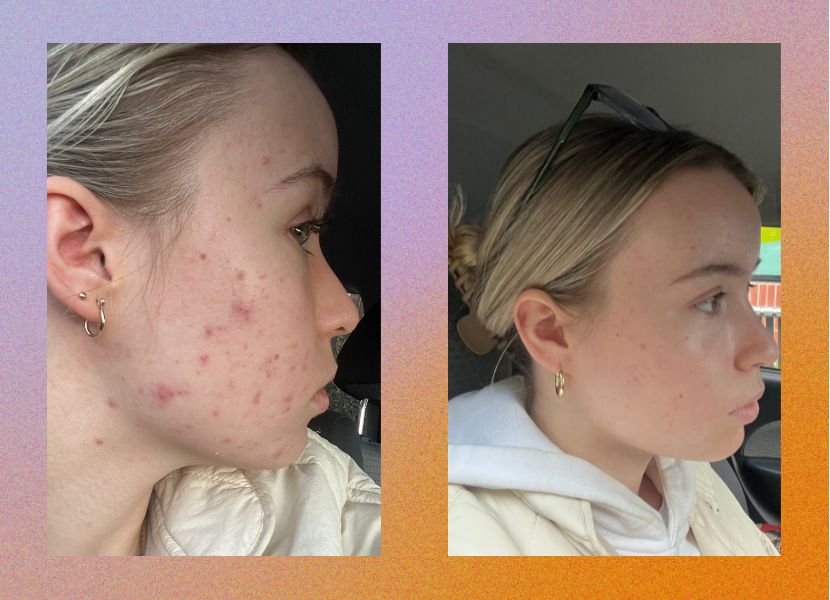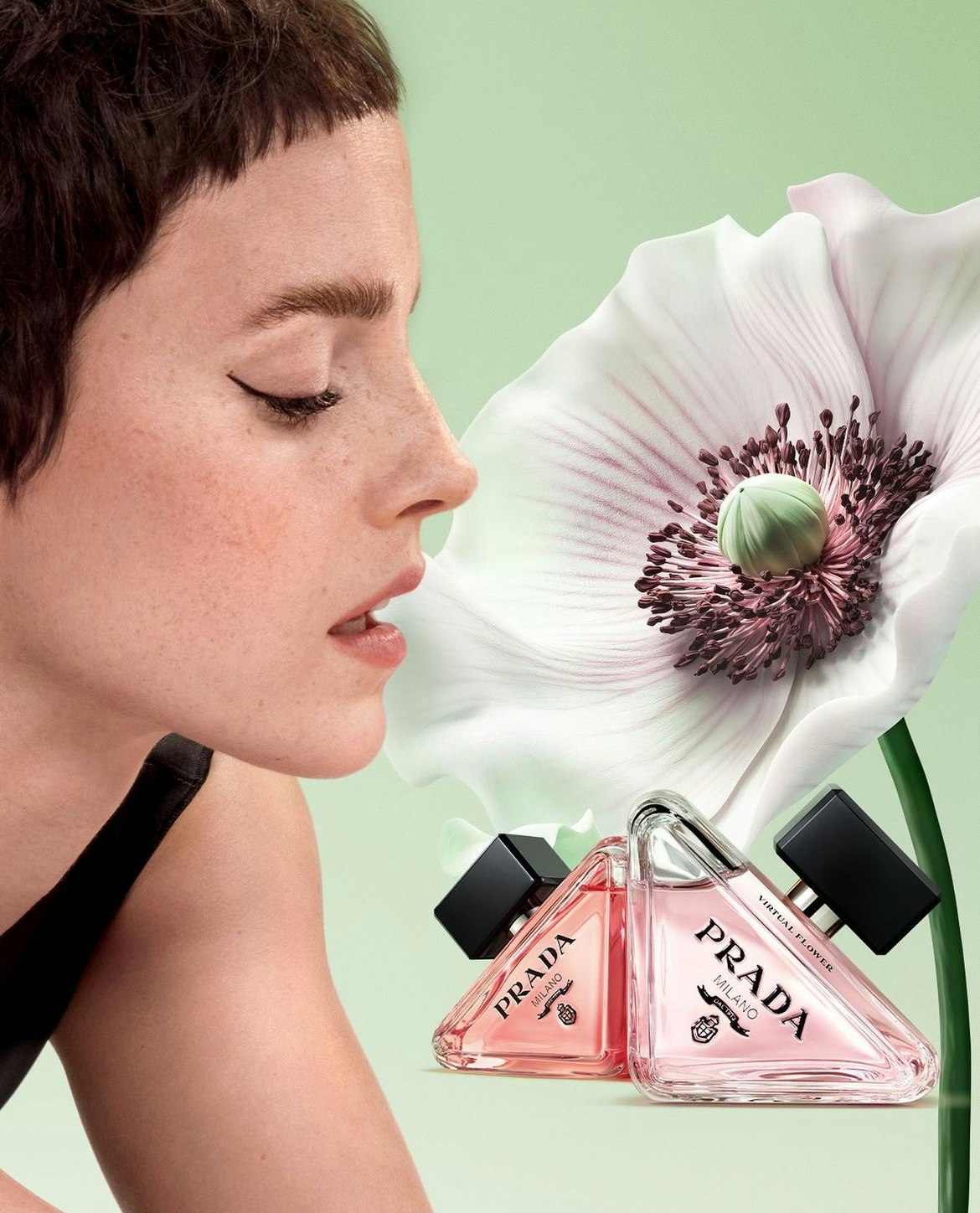
I gave up my skincare routine to see if it would fix my acne
What to try when you feel like you’ve tried everything.
I have struggled with acne since the day I hit puberty. In the over 10 years since, I’ve tried what feels like every treatment out there. I started with generic chemist finds, moved on to prescribed topical treatments and medications, then on to hormonal birth control before eventually resorting to two rather harrowing rounds of Roaccutane.
My skin, which is also incredibly sensitive (like, break out in a rash when I cry, sensitive), had been doing much better until a year or so ago when my acne flared up again. Rather painful and angry spots were once again sprawled across my face and despite my efforts, time and serious financial commitments, they wouldn’t budge.
We like nosy people. Don’t be shy, head to our Beauty section for more.
So, just over two months ago, feeling low on options, I decided to cut it all out. I said goodbye to my serums, oils and cleansers and committed to using only what felt like the bare minimum: a moisturiser, SPF and micellar water. For reference, I used the QV Face Oil-Free Moisturiser, the Bondi Sands Daily Moisturising Face SPF 50+, and the Garnier Skin Active Micellar Cleansing Water. I find these basics work for me, so it was a nice added bonus that I got a break from the higher-end ‘extras’ I was previously investing in.
After eight weeks of this routine, my face felt like it was finally calming down again. With the exception of some fun hormonal breakouts, my angry spots reduced to a bit of redness, some surface-level irritation and my pre-existing scarring.
As a bonus, my previously dull face felt more glowy than ever. If you’re feeling sceptical, take a look at these (slightly awkward because I didn’t initially take them for the public eye) before and afters.

Now I didn’t want to get ahead of myself, but I really did feel like I’d cracked some kind of code. Can less really be more? I spoke to Dr Shammi Theesan, founding dermatologist at Ode Dermatology, to find out.
Back to basics
“The way I would start is to strip back,” says Dr Shammi. “I would strictly only cleanse with a sphingolipid-rich, ceramide-rich, hyaluronic-rich cleanser.” For those with sensitive skin, she suggests using micellar water as an alternative, and looking into taking an antihistamine twice a day to really reduce any inflammation.
When stripping back on products, Dr Shammi recommends a basic routine consisting of a gentle, emollient-rich, glycerine or glycerol-based moisturiser with a zinc sunscreen on top, and only washing the face at night. “We need to teach our skin to optimise its own microbiome. It’s got a good cycling mechanism there, so we’re just trying to optimise that and not overload it with too many actives.”
But there are non-negotiables in skincare. Dr Shammi emphasises the importance of the cleanser/micellar water, moisturiser, SPF routine. If you’re going to add a skin active, she suggests a niacinamide or vitamin B3 product, noting each is “a very good starting point and overall multitasker for a skin active.”
Dr Shammi also emphasises the importance of gut health to maintain skin health. “Look into [the] reduction of processed foods, less sugar, less dairy, prebiotic supplementation, probiotic supplementation.” She adds that getting enough sleep and vitamin D are also relevant factors to consider when looking after your skin.
SCROLL TO CONTINUE WITH CONTENT
SCROLL TO CONTINUE WITH CONTENT
So, what’s doing more harm than good?
It’s important to note that some products can do more harm than good to skin with underlying issues, especially if not applied properly. She explains that overdoing certain products, even those marketed as skin saviours, can strip the skin’s microbiome. “Things that are skin-enhancing can sometimes include vitamin c and retinol, and you really don’t want to overload the skin or introduce actives like that without having prepped your skin.”
Dr Shammi recommends speaking with your doctor or dermatologist before applying new actives, which she adds, can ultimately cause breakouts. “These skin products can actually cause local inflammation and make your oil production worse,” she says.
If you find your skin feels dryer, redder or tighter after using a product, Dr Shammi suggests stripping usage back to only every few days.
She adds it’s also best to test products one at a time for a few weeks to decipher which, if any, might be causing inflammation. This way, you’ll know whether it’s a single product irritating your skin, or the combined interaction of products that don’t go well together.
A road to recovery
When reintroducing products, Dr Shammi suggests conducting a patch test first, applying a small amount of product on your inner arm, as it often mimics the skin on your face. If you do feel that a product is irritating, go back to your basic, non-negotiable routine, wait 28 days and then retest it.
Once you’re ready, consider using a smaller amount of product than usual, starting on your upper jaw or neck so as to not irritate your face. You could also try applying a thin film of glycerine or glycerol-based moisturiser and then using the new product on top. Another approach is to apply, then wipe off the product one night, then build up a tolerance each evening by leaving the product on slightly longer after each application.
Reflecting on the above, I’d say my little experiment was on the right track. With my fresh-feeling face and Dr Shammi’s advice, I’m ready to make small adjustments and start reintroducing some actives into my routine.
This article was originally published on October 10, 2022.
To discover more on Dr Shammi and the variety of acne therapies, head here.
You May Also Like

I asked a Melbourne stylist for her biggest fashion icks
August 22, 2023
The Best New Beauty Products to Shop in July 2024
April 9, 2022
